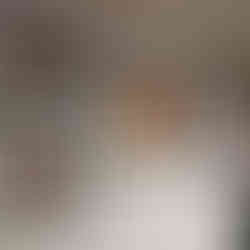The Other House
- Mar 12, 2018
- 4 min read
5th to 27th May 2018
There is an Iranian, a Syrian, a Palestinian and an Israeli… no it is not the start of a joke. These are some of the artists who are exhibiting in the cutting edge exhibition ‘The Other House’, curated by Counterpoints Arts , Platforma and SEAS – Socially Engaged Art Salon, at the BMECP Centre, Brighton. The exhibition focuses on social and political art as well as participatory practices.
Photos from the exhibition by Jenni Lewin-Turner
The Other House exhibition depicts home as a difficult, strange, missed, threatening or dangerous place. Using photography, painting, collage and installation, the international group of twenty artists shed a harsh and revealing light on what is meant to be a sanctuary and the most comfortable place – home – and expose its precarious foundations.
The ‘houses’ in the exhibition are haunted by political, social, economic, gender and environmental issues that demolish any fantasy of a ‘house’ as a safe and comforting place. They show the ‘house’ as an ‘other’ space and as a system of processes in which people find themselves as strangers in their own home.
The exhibition includes installations, performance, photography and paintings. It depicts among other stories the horrendous experiences of the Iranian painter and writer Nasrin Parvas in a women’s jail in Tehran that was turned into a museum that aims to warn citizens off any attempts at dissent. Heba Rezk, a young Syrian refugee has painted using collage techniques her parent’s house in Damascus and her current flat in Brighton while Russell Honeyman uses similar techniques to describe the aftermath of drone attacks. In a depiction of the brutal conditions of refugees that try to cross the Mediterranean Sea, Yasser Ameur has created a take on Géricault’s famous painting ‘The Raft of the Medusa’, and Joseph Dodd, in a striking sculpture, depicts the barriers refugees who escape from wars are facing in Europe. Another work that tackles the issue of migration and refugees is the transfixing multi-media installation “Empty Gestures” by Anna Sherbany which questions the control / ownership over water and its effects.
The theme of the un-homely runs through several of the exhibition’s works: Melanie Menard’s hunting photography series documents deserted houses in Ireland which their occupants had to leave due to political and economic issues. Closer to home, Carol Nicolaou has created a multi layered collage depicting the issue of homelessness vs. Brighton’s rising house market.
Tokpeou, who recently exhibited in museums in Poland and Germany, brings to the exhibition broken chairs turn into sacred objects, and Zoe Prichard through diffused and unfocused photography portrays a distorted perception of her home, in the early morning, maybe after a heavy night of drinking. The stretching of the perception of time and space can be seen in the beautiful installations of Messua Poulin Wolff, made through an extremely laborious process of repetitive drawing, in Ram Samocha’s delicate live drawings and sound performance, and in the minimalist installation by Jacob Talkowski. Clare Buckle, in a series of screen prints, explores the muted facades of power stations and their seeming detachment from their local settings.
The issue of women in domestic and public places appears in several works. Estabrak al-Ansari’s mesmerising underwater photography series “Omanis Under Water” is based on a series of conversations with Omani people on topics that cannot be discussed at home . Julia Andrews-Clifford’s ongoing photography campaign protests against the overlooked contribution of women’s housework and child care while Norma D Hunter’s installation is a witty comment on the restrictions mother experience when they need to breastfeed in public spaces. In the punchy photography work ‘eye’, Tugba Tirpan takes a critical look at the female body and identity from the binary perspective of West and East. Women and children in arduous situations are also depicted in the photography series of child labour in quarries in India by the photographer Bharat Patel.
Issues of race, ethnicity and nationality are intrinsic to the space of the home and home-land. These issues are depicted in intimate ways in the tactile collage series by Josef Cabey that portrays the conditions of being a gay black man in the UK.
Phati Munguni transforms the gallery space with large batik works into a total environment in which the boundaries between African and European art blurs. A play of boundaries between inside and outside and a prickly comment on colonialism can be found in the installation works of Naroa Perez, ‘Touch of Nostalgia’ and the ‘New Union Flag Project’ by Gil Mualem-Doron, that recently completed a national tour including at the Tate Modern and currently at the People’s History Museum, Manchester.
The exhibition includes two artists’ and curators talks:
Sunday, 13th May, 15:00. There is No Place Like Home – a women’s artists’ talk, including Nasrin Paraz who was jailed in a museum in Tehran and will launch an illustrated book about her experiences. Chaired by Jenni Lewie Turner.
Sunday, 27th May, 15:00. Baklava & Strudel – on Art & Diversity: A closing event of the exhibition with a panel of curators, consultants and artists.

































Comments